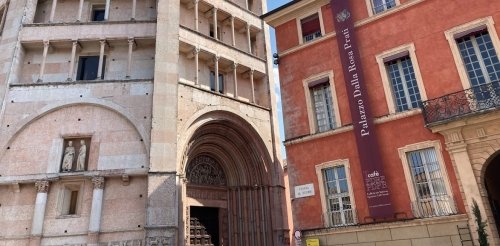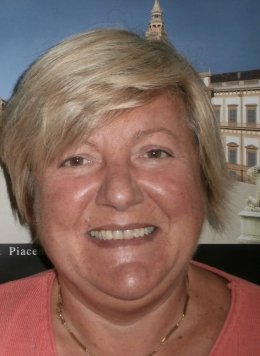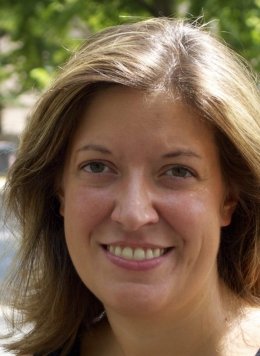Pitzer in Italy Semester Program

San Giovanni Battista Baptistery and Palazzo Dalla Rosa Prati in Parma, Italy
The Pitzer in Italy program is based in Parma, part of the Emilia-Romagna region of northern Italy. Pitzer has selected the city of Parma to provide students with a high degree of integration into Italian family life and community. The charming city is small enough to provide students with many opportunities to practice their language learning, but large enough to offer students shops, restaurants, things to do, and a wealth of opportunities to soak in Italian culture and explore local art, politics, business, science, and culture through community engagement projects. The city is also well connected by train to the rest of Italy. The program is affiliated with the University of Parma, one of the oldest universities in the world, and the Toschi Art Institute of Parma.
Program Dates
- Fall: Beginning of September to mid-December
- Spring: Late January to early May
Eligibility and Preparation
- Students must be in good academic standing and have a 2.0 or higher GPA on a 4.0 scale
- Prior Italian language study and/or coursework in European or Italian history is recommended
- The program is open to Pitzer and non-Pitzer undergraduate students
Courses & Credits
| Course | Claremont Credits | Semester Credits |
|---|---|---|
| Topics in Italian Studies: Continuity and Change in Contemporary Italy | ITAL 101 PZ | 1.0 | 4 |
| Intensive Italian Language | ITAL 15/25/33/44/55 PZ | 2.0 | 8 |
| Independent Study Project: Italy | ITAL 999 PZ | 1.0 | 4 |
| Survey of Italian Renaissance Art, 1400-1550 | ITAL 109 PZ | 0.5 | 2 |
| TOTALS | 4.5 | 18 |
Program Information
Continuity and Change in Contemporary Italy
This core course provides students with an interdisciplinary overview of Italian history, politics, culture, religion, and contemporary issues. Through lectures from Italian scholars, study trips, host family stays, discussions, and writing assignments, students will connect their personal and field-based experiences with academic concepts related to culture and change in Italy.
For Pitzer students, this course will satisfy Pitzer’s Social Responsibility Praxis (SRX) requirement.
Intensive Italian Language
Students take Intensive Italian offered at the University of Parma. Becoming fluent in Italian, however, is not just a classroom exercise. It is accomplished by the work done with a Language Tandem Partner (an Italian university student learning English) and also part of students’ everyday life through interactions with their host family and local Italians. Students with an advanced level of Italian may be eligible to take regular university courses in Italian (in lieu of the Intensive Italian Language course).
Independent Study Project: Italy
The Independent Study Project (ISP) is a fundamental component of Pitzer College Study Abroad Programs, designed to offer students the opportunity to conduct an in-depth investigation on a chosen topic. This project enables students to apply the cultural, academic, and linguistic knowledge acquired throughout their study abroad semester, encouraging independent, critical thinking and hands-on experience in diverse fields such as social sciences, natural sciences, and humanities. The ISP may take the form of research, community engagement, internship, apprenticeship, or any combination that allows for a meaningful integration of academic inquiry and practical experience.
In Parma, students are typically assigned to a volunteer organization focused on an area of interest (health, education, immigrant assistance, environmental, community art etc.) for a full immersion experience that combines Italian language, socio-anthropological training and field work. Through hands-on volunteer work at a local service agency, students learn about contemporary Italian society. Students with an interest in studio art are able to participate in art courses through a partnership with a community art organization. Past service included:
- Teaching English in elementary, middle, and high schools
- Working with recent immigrants through non-profits and centers
- Assisting in health programs at local clinics and the Public Health Service (Spazio Giovani)
- Working in various departments at the University of Parma (library, chemistry department, language department, media studies, art)
- Assisting with local youth activities (art classes, music education, sports teams etc)
Survey of Italian Renaissance Art, 1400-1550
The half-credit course course aims to give students an overview of the main artists and works of art that have characterized the Renaissance period in Italy. Students will receive an introduction to the historical period, learn about the concepts of Renaissance and Humanism, and study the main artistic techniques used by different artists. Students will analyze how the different artistic centers (Florence, Rome, Venice, Milan and Parma) have influenced the artists and their works. Emphasis will be given to the analysis of the different works of art through images and originals. The course will include a series of on-site visits in Parma to see works by Correggio and Parmigianino and longer trips to neighboring cities.
The heart of the Pitzer in Italy program is being part of an Italian family. Students live with families for the entire program except on study trips. Through the host family, students have the best opportunity to be incorporated into the social fabric of the local community. Host families may be located in central areas or outside the town of Parma.
To deepen students’ understanding of topics covered in the core course, they visit important local sites in Parma, and often take longer trips. In the past, local trips have included:
- Attending an opera in the glamorous 1800’s opera theater of the city
- Watching master cheesemakers turn milk into Parmigiano Reggiano
- Touring pasta-making facilities to learn about the food industry in Northern Italy
- Visiting local castles such as the Castello di Torrechiara
On longer trips, students have visited:
- Milan to visit the world-renowned Last Supper by Leonardo da Vinci and learn about major industries in the industrial north of Italy
- Florence to admire the masterpieces of Italian Renaissance Art in the Uffizi Gallery, explore the famous Cathedral of Santa Maria del Fiore and Baptistery, and learn about power and politics in Italy
- Venice to stroll along the canals, admire the golden mosaics in St. Mark’s Basilica, and to learn about the city's fascinating history and current issues around climate change and over tourism
How to Apply
Application Steps and Deadlines for Pitzer College Students
Application Deadlines for Pitzer Students
- Fall 2025:
November 15, 2024*Deadline has been extended until March 1, 2025 - Spring 2026:
May 1, 2025*Deadline has been extended until October 1, 2025
Application Steps for Non-Pitzer Students
Application Periods for Non-Pitzer Students
- Fall 2025: Accepting applications from guest students between December 1, 2024, and April 1, 2025
- Spring 2026: Accepting applications from guest students between April 1, 2025, and October 1, 2025
Before You Go
Passport: Everyone on the program needs a passport. Check the expiration date. If you do not have a passport valid for six months after your planned return from study abroad, then you will need to renew your passport.
Orientation: After students apply and are accepted into the program, they will participate in a program orientation before leaving for Italy. Orientations are required and designed to ensure students get the most out of the study abroad experience. They provide cultural context, health and safety information, and academic guidelines. At orientation, students will receive details specific to the program including program dates, flight arrangements, immunization documents, safety guidelines, and the handbook.
Visas: Typically, students on the Pitzer in Italy program will need to obtain a NATIONAL VISA for Italy before leaving the U.S. The Office of Study Abroad & International Programs will provide instructions on how to book a visa appointment and issue the necessary documents. Once students receive instructions and needed documents, they should begin the visa process ASAP as it takes 90 days to go through the Italian visa process. To apply for the visa, students must make an online appointment and appear in person at their Italian consulate. Some students may need to travel to get to a consulate. While going through the visa process students will not have access to their passports. For additional information on the process, visit the Los Angeles Italian Consulate website.
Program Team

Franca Mora
- Program Co-Director, Pitzer in Italy

Elena Feboli
- Program Co-Director, Pitzer in Italy